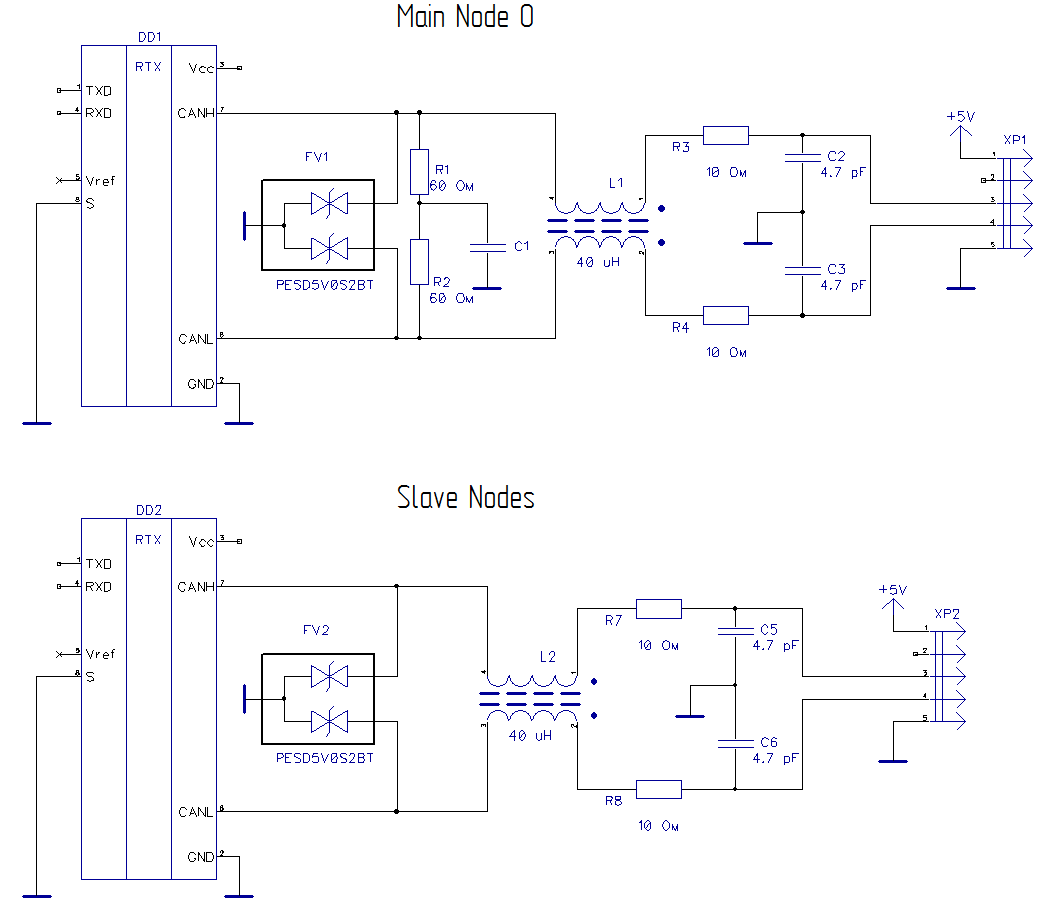We have CAN bus with 1 central block and 4 nodes. Each node have STM32 microcontroller and SN65HVD232 transiever.
Central block has schematic
4 nodes have schematic
Line length is 2 meters.
Problem: SN65HVD232 chips spontaniously die in any node! Last time 3 of 5 burned! It gives short between +3.3 and GND and whole device shuts down. How is it possible?
SN65HVD232 should be tolerant even for short connection between CANL and CANH. Power supply is stable 3.3V... Help me please.





